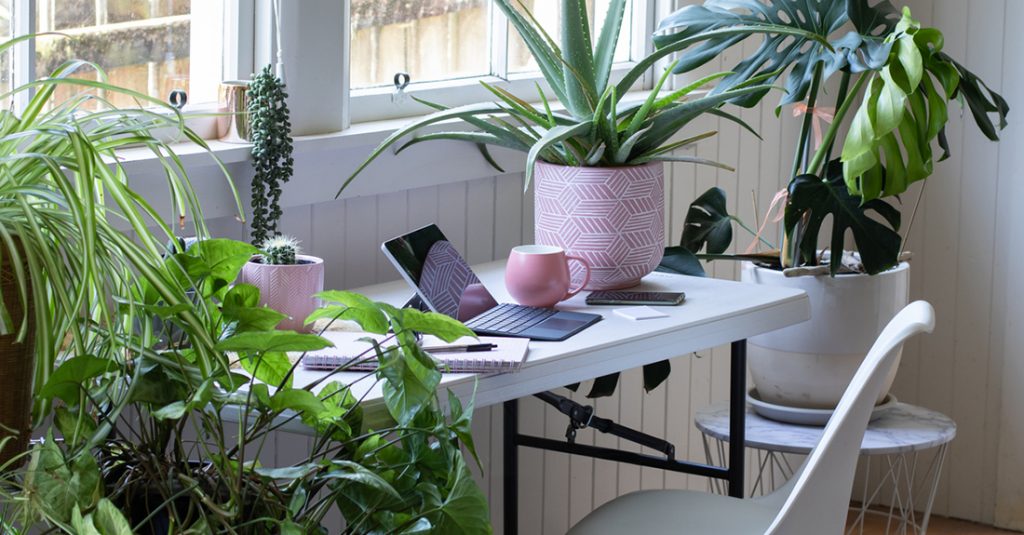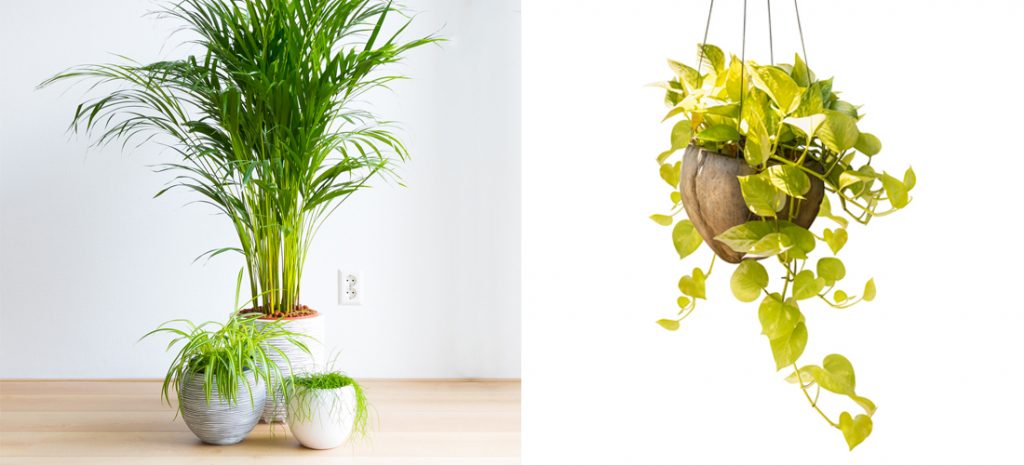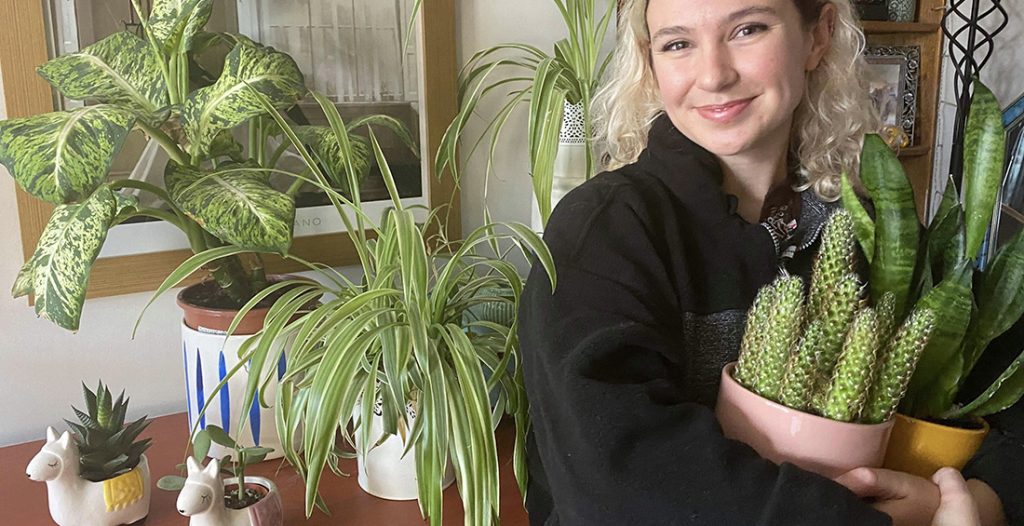As many of us are without our usual escape to the office, it has become more important than ever to create a peaceful, happy space at home. For me this has meant a new-found dedication to feng shui. A common aesthetic goal for many aspiring decorators (myself included) is to bring the outdoors, indoors. No garden? No problem! Long gone are the days when plants were simply the domain of avid gardeners or botany enthusiasts. As I watch aloe vera creep onto every bookcase and spider plants dominating every windowsill, it is clear that houseplants are increasingly becoming part of the furniture. In recent years the market for houseplants has boomed, with independent shops emerging around every corner to satisfy our foliage fantasies. In this instalment, we continue our exploration of plants, and decide whether the obsession is simply the latest design trend or if there is a scientific explanation behind the greenery (spoiler: there is!).
Nature or nurture?
We all recognise that feeling when we nurture and care for our plants, to then be rewarded with a sprouting leaf or blooming flower – pure joy. Amazingly, this innate emotional connection with plants has a name: biophilia. From an evolutionary perspective, throughout human history it has been vital to understand nature and adopt certain behavioural responses in order to survive and thrive in the natural world. The biophilia hypothesis suggests that humans’ instinctive association with the natural environment persists through a combination of genetic inheritance and cultural learning. With every visit to a nature reserve; every desire to embark on a fresh country walk; every stroke of a paintbrush on a landscape painting, biophilia could be at play. Nature is not only our entertainment, but our release and our muse. Our love of houseplants is no exception.
Psychological benefits
The impact of nature on mental health is a heavily researched area, with studies uncovering a significant link between nature exposure and mental health effects. These include a reduction in depression, anxiety and stress. The relationship has proven to be more prevalent amongst those in urban areas where nature exposure is rarer, leaving less capability for habituation. The basis for this nature exposure includes direct interaction, as well as simply viewing it and appreciating it from an aesthetic perspective.

Office environments are, unsurprisingly, associated with high levels of stress and have therefore been the focus of many studies – with the primary aim being to discover what can stimulate greater productivity whilst reducing stress in the office. A study found that when plants were introduced into the workplace, employee performance increased. This is because when we work in an environment where we are able to be psychologically engaged (via the plant), we are happier and consequently work better. Although many of the current studies focus on the benefits of plants in an office, with our homes becoming our primary workplace, the results hold true for houseplants in the home.
Health benefits
What is often overlooked when discussing the benefits of indoor plants is the phytoremediation capacity of plants and the related health benefits. Air pollution is often associated with the busy roads of bustling cities, yet recent studies have found that indoor air pollution from the emissions of our daily household items can be very damaging. With every pop of the toaster or lighting of the stove, volatile organic compounds (VOCs) are released, which are gaseous chemicals that can be harmful when inhaled. The concern only heightens as we enter winter and ventilation decreases as we shut our doors to keep out the biting cold. Could houseplants help us clean our indoor air quality?

Research seems to suggest this could be the case. When studying the effect of potted plants on total VOC levels within an office environment it was found that when the total VOC level reached a certain threshold, large reductions were found in offices that contained plants. We can assume the threshold initiates a VOC-removal response in plants, demonstrating their importance as efficient and sustainable bioremediation systems to improve indoor air quality.
Finally we have proof that investing in houseplants is not about simply adorning your living space with the latest accessories. In fact, they provide several mental and physical benefits. So, whether you want to start with a low maintenance yucca or a more demanding calathea, maybe it’s time to take the leaf of faith (sorry) and brighten up your shelves and windowsills with a bit of greenery – added bonus, it also makes you super trendy!

If you’ve got the green thumb and want more houseplant content, get in touch with @RachaelAtNotch and follow @NotchCom

